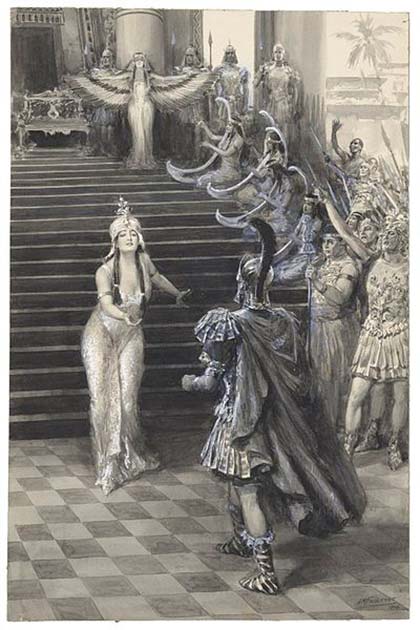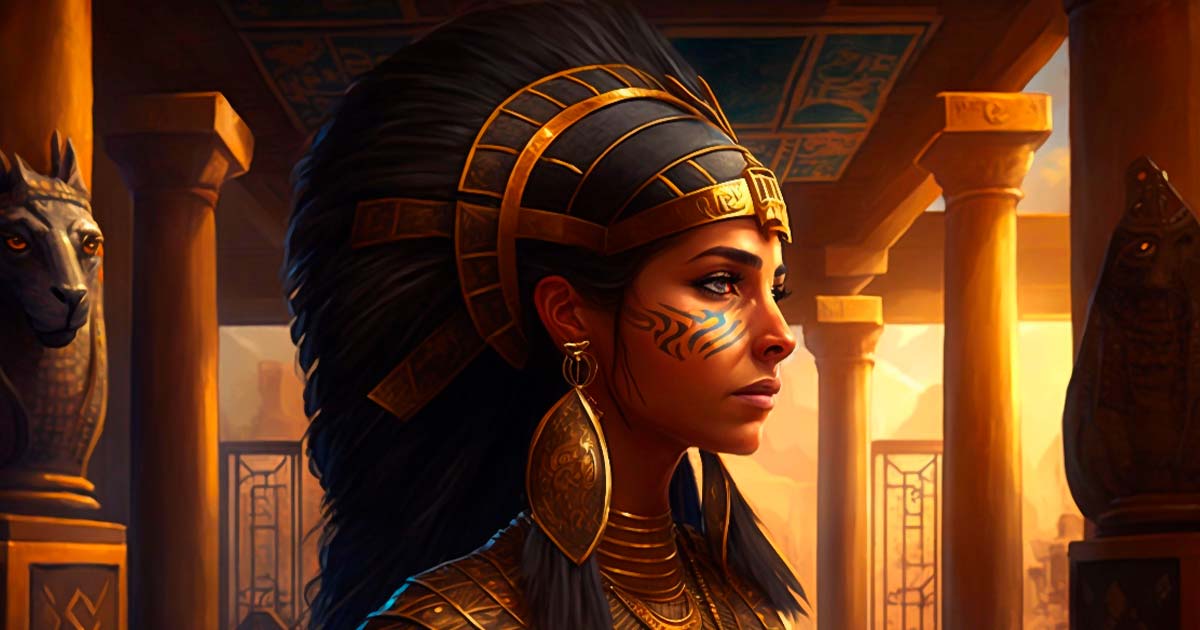Cleopatra Selene II: A Survivor’s Royal Destiny
Cleopatra Selene II, daughter of the famed Egyptian queen Cleopatra VII and Roman general Mark Antony, led a remarkable and turbulent life that intertwined the legacies of both Egypt and Rome. Born into a world of political intrigue and power struggles, Cleopatra Selene II's story is one of resilience, adaptation, and enduring influence. This article delves into the life and achievements of this enigmatic princess, shedding light on her unique position in history.
A Lady of Royal Lineage: The Background of Cleopatra Selene II
Cleopatra Selene II was born in 40 BC in Alexandria, Egypt, during a time of great turbulence and uncertainty. As the daughter of renowned Cleopatra VII and Roman triumvir Mark Antony, she was destined to be a part of one of the most famous and controversial families in history. Just with that, she was destined for grandeur and fame. Cleopatra Selene II's name was derived from the Greek word for the “moon”, and it opposes the name of her twin brother, who was named Alexander Helios (Greek for “sun”).

A drawing of Cleopatra greeting Antony in Shakespeare's Antony and Cleopatra (A. M. Faulkner/CC BY-SA 4.0)
Following the brutal defeat of her parents by Octavian (later Emperor Augustus) in the Battle of Actium in 31 BC, young Cleopatra Selene II and her twin brother, Alexander Helios, were taken to Rome as political prisoners. Young and ambitious Octavian paraded his captives in an elaborate triumph, dressed as the sun and the moon. But despite their captivity, they were raised in the household of Octavia, sister of Octavian and a former wife of Mark Antony. This arrangement was both a political strategy to consolidate Octavian's power and an opportunity for Cleopatra Selene II to receive a prestigious Roman education.
In Rome, Cleopatra Selene II was exposed to the cultural and intellectual wonders of the empire. She received a first-rate education, as was natural for a lady of noble birth, studying Greek and Latin literature, philosophy, and rhetoric. She was fluent in multiple languages, including Egyptian, which enabled her to retain ties to her heritage and navigate the complex world of diplomacy.
- Finding the Lost Mother of Cleopatra VII - Cleopatra V Tryphaena of Egypt
- The Enigma of Cleopatra's Death: Was it Suicide or Murder?
The Lady Without a Home
As she grew older, Cleopatra Selene II's life took an unexpected turn when she married Juba II, the king of Mauretania (modern-day Morocco and Algeria). This union was a strategic alliance that aimed to strengthen Rome's grip on North Africa while granting Cleopatra Selene II a position of influence and power. Needless to say, this marriage was not one she herself chose - it was an arranged political union that only served Rome’s interests. Nevertheless, Cleopatra Selene II and Juba II went on to have two children, Ptolemy and Drusilla, and established a thriving court known for its intellectual pursuits and architectural achievements.

A likely depiction of Cleopatra Selene II wearing an elephant scalp, raised relief image on a gilded silver dish, from the Boscoreale Treasure, 1st century BC (Public Domain)
Through her influential marriage with Juba II, Cleopatra Selene II became the queen of Mauretania. This was a vast territory that was under Roman influence, being their client kingdom. She ruled alongside her husband, proving to be a shrewd leader and devoted to her duty as a monarch. As a queen, Cleopatra Selene II embraced her dual heritage, blending Egyptian, Greek, and Roman influences within her court. She continued to foster cultural exchange, promoting the arts, sciences, and architecture.
Cleopatra Selene II's reign was marked by stability and prosperity, as she successfully navigated the complex political landscape of Rome while maintaining autonomy for her kingdom. She forged strong alliances with the Roman emperors, securing the loyalty and protection of Rome for Mauretania. Cleopatra Selene II's leadership skills, intelligence, and diplomatic acumen made her a respected figure among her contemporaries. It is widely agreed by scholars that during her time as Queen, Mauretania prospered in many ways.
- Gods, Goddesses and… Rabbits? The Surprising Ancient Myths of the Moon
- Wonder-Woman Playing Cleopatra Sparks Racial Controversy
A Legacy to Last for Centuries
Cleopatra Selene II's reign in Mauretania left a lasting impact on the region. She implemented policies that promoted economic growth, infrastructure development, and cultural exchange. Her court at Caesarea (modern Cherchell in Algeria) became a center of intellectualism, attracting philosophers, scholars, and artists from various corners of the Roman Empire. Cleopatra Selene II's patronage of the arts and sciences contributed to the flourishing of Mauretanian culture and left an indelible mark on the artistic and intellectual landscape of the time.
One of Cleopatra Selene II's most significant contributions was the architectural transformation of her capital. She commissioned the construction of magnificent public buildings, temples, and theaters that reflected the grandeur of Roman and Egyptian architectural styles. These structures showcased the merging of cultures and served as symbols of her power and influence.
Her power extended beyond the borders of Mauretania as well. As a queen with Egyptian ancestry, she maintained close ties with Egypt, preserving and promoting her family's heritage. She supported the worship of Egyptian deities, such as Isis and Serapis in Mauretania and played a role in the revival of Egyptian religious practices. Cleopatra Selene II's efforts helped keep Egyptian traditions alive during a time when Rome exerted significant influence over the Mediterranean world.
Furthermore, Cleopatra Selene II's children also played important roles in shaping the history of the Roman Empire. Her son, Ptolemy, had a successful military career and served as a trusted ally to Roman emperors. He played a pivotal role in the history of the region, and was one of the most respected allies of Rome. She also had a daughter, whose name sadly does not survive.

The tomb of Juba II and Cleopatra Selene II in Tipaza, Algeria. (Zil/CC BY-SA 3.0)
One of the Last of the Ptolemaic Dynasty
Cleopatra Selene II's legacy endured long after her death. Through her granddaughter Drusilla, her family line intermarried into the highest Roman nobility for many generations that followed. However, her family's fortunes eventually declined, and Mauretania was annexed by Rome around 40 AD, after Caligula brutally assassinated Ptolemy of Mauretania. Despite this, Cleopatra Selene II's influence on the region's culture and history persisted, leaving an indelible imprint on the identity of North Africa.
In popular culture, Cleopatra Selene II's intriguing life and heritage have captured the imagination of writers, historians, and artists. She has been depicted in numerous novels, films, and television shows, which often explore her complex relationships with her family, her struggles as a woman in a male-dominated world, and her ability to navigate the intricate web of Roman politics.
Top image: Queen Cleopatra Selene II, between Rome and Egypt. Source: AIproduction/Adobe Stock
References
Burstein, S. M. 2007. The Reign of Cleopatra. University of Oklahoma Press.
Roller, D. W. 2004. The World of Juba II and Kleopatra Selene: Royal Scholarship on Rome's African Frontier. Routledge.
Roller, D. W. 2018. Cleopatra's Daughter: And Other Royal Women of the Augustan Era. Oxford University Press.

















